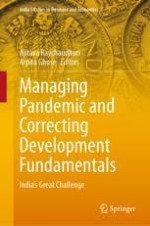2023 | OriginalPaper | Buchkapitel
Unequal Inequalities in India: Income and Non-income Dimensions
verfasst von : Achin Chakraborty
Erschienen in: Managing Pandemic and Correcting Development Fundamentals
Verlag: Springer Nature Singapore
Aktivieren Sie unsere intelligente Suche, um passende Fachinhalte oder Patente zu finden.
Wählen Sie Textabschnitte aus um mit Künstlicher Intelligenz passenden Patente zu finden. powered by
Markieren Sie Textabschnitte, um KI-gestützt weitere passende Inhalte zu finden. powered by
